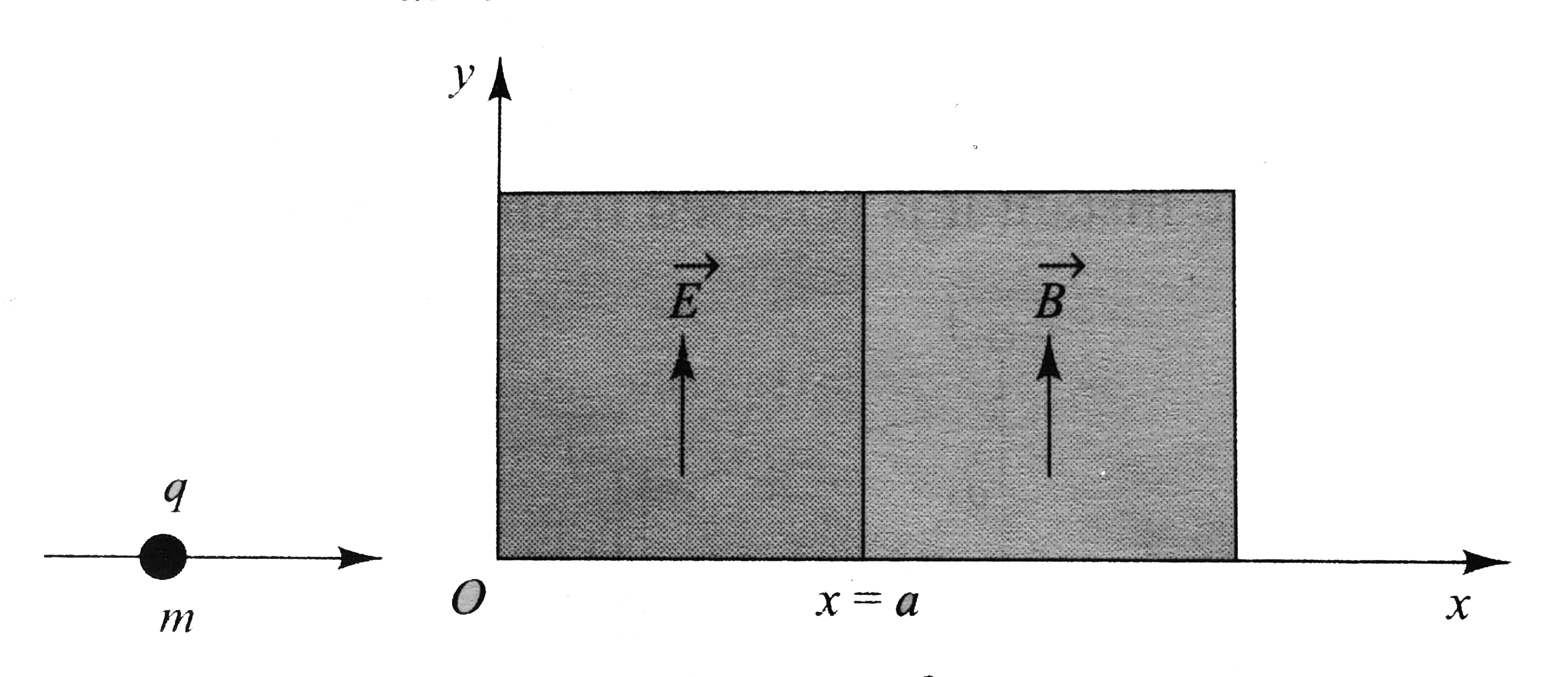An electron moving with a speed u along the positive x-axis at y=0 enters a region of uniform magnetic field which exists to the right of y-axis. The electron exits from the region after some time with the speed v at coordinate y, then

v>u,y<0
v=u,y>0
v>u,y>0
v=u,y>0
The correct Answer is:D
Given →u and →B are ⊥r to each other. Force on electron due to magnetic field is, →F=−e(→u×→B). Since this force acts perpendicular to →u, therefore, it does not do any work. Due to it, the magnitude of velocity of electron remains constant. Due to the perpendicular magnetic field acting on the moving electron, the electron will describe a circular path in the magnetic field in clockwise direction. As a result of it, the condition (d) i.e., v=u and y<0 is satisfied.
Topper's Solved these Questions
- BOOK - PRADEEPCHAPTER - MAGNETIC EFFECT OF CURRENT AND MAGNETISMEXERCISE - Test Your Grip (a)1videos
MAGNETIC EFFECT OF CURRENT AND MAGNETISM
- BOOK - PRADEEPCHAPTER - MAGNETIC EFFECT OF CURRENT AND MAGNETISMEXERCISE - Test Your Grip (c)1videos
MAGNETIC EFFECT OF CURRENT AND MAGNETISM
- BOOK - PRADEEPCHAPTER - MAGNETIC EFFECT OF CURRENT AND MAGNETISMEXERCISE - Value Based Questions2videos
MAGNETIC EFFECT OF CURRENT AND MAGNETISM
- BOOK - PRADEEPCHAPTER - ELECTROSTATICSEXERCISE - ASSERTION-REASON TYPE QUESTIONS2videos
ELECTROSTATICS
- BOOK - PRADEEPCHAPTER - OPTICSEXERCISE - Multiple choice questions1videos
OPTICS
Similar Questions
An electron in moving along positive x-axis in the presence of uniform magnetic field along positive y-axis. What is the direction of the force acting on it ?
View SolutionAn electrons is moving along +ve x-axis in the presence of uniform magnetic field along +ve y-axis. What is the direction of the force acting on it?
View Solution
Knowledge Check
- Question 1 - Select One
An electron travelling with a spped u along the positive x−aξs enters into a region of magnetic field where B=−B0ˆK(x>0). It comes out of the region with speed v then
 Av=uaty>0Bv=uaty<0Cv>uaty>0Dv>uaty<0
Av=uaty>0Bv=uaty<0Cv>uaty>0Dv>uaty<0 - Question 2 - Select One
An electron moving with a uniform velocity along the positive x-direction enters a magnetic field directed along the positive y-direction. The force on the electron is directed along
APositive y− directionBNegative y-directionCPositive z- directionDNegative z-direction - Question 3 - Select One
An electron moving with a uniform velocity along the positive x-direction enters a magnetic field directed along the positive y-directed along the force on the electron is directed along :
Apositive y-directionBnegative y-directionCpositive z-directionDnegative z-direction
A positively charged particle, having charge q, is accelerated by a potential difference V. This particle moving along the x-axis enters a region where an electric field E exists. The direction of the electric field is along positive y-axis. The electric field exists in the region bounded by the lines x=0andx=a. Beyond the line x=a (i.e., in the region x>a), there exists a magnetic field of strength B, directed along the positive y-axis. Find

a. at which point does the particle meet the line x=a.
b. the pitch of the helix formed after the particle enters the region x≥a. (Mass of the particle is m.)View SolutionAn electron moving with a uniform velocity along the positive x-direction enters a magnetic field directed along the positive y-directed along the force on the electron is directed along :
View SolutionAn electron movies with a speed v along positive direction of x - axis . If a magnetic field B acts along the positive y - direction , then the force on the electron will act along .
View SolutionA square-shaped wire loop of mass m, resistance R and side 'a' moving with speed v0, parallel to the x-axis, enters a region of uniform magnetic field B, which is perpendicular to the plane of the loop. The speed of the loop changes with distance x (x<a) in the filed, as
View SolutionTwo electrons are moving with the same speed v. One electron enters a region of uniform electric field while the other enters a region of uniform magnetic field,then after sometime if the de-Broglie wavelenths of the two are λ1 and λ2 then :
View Solution

